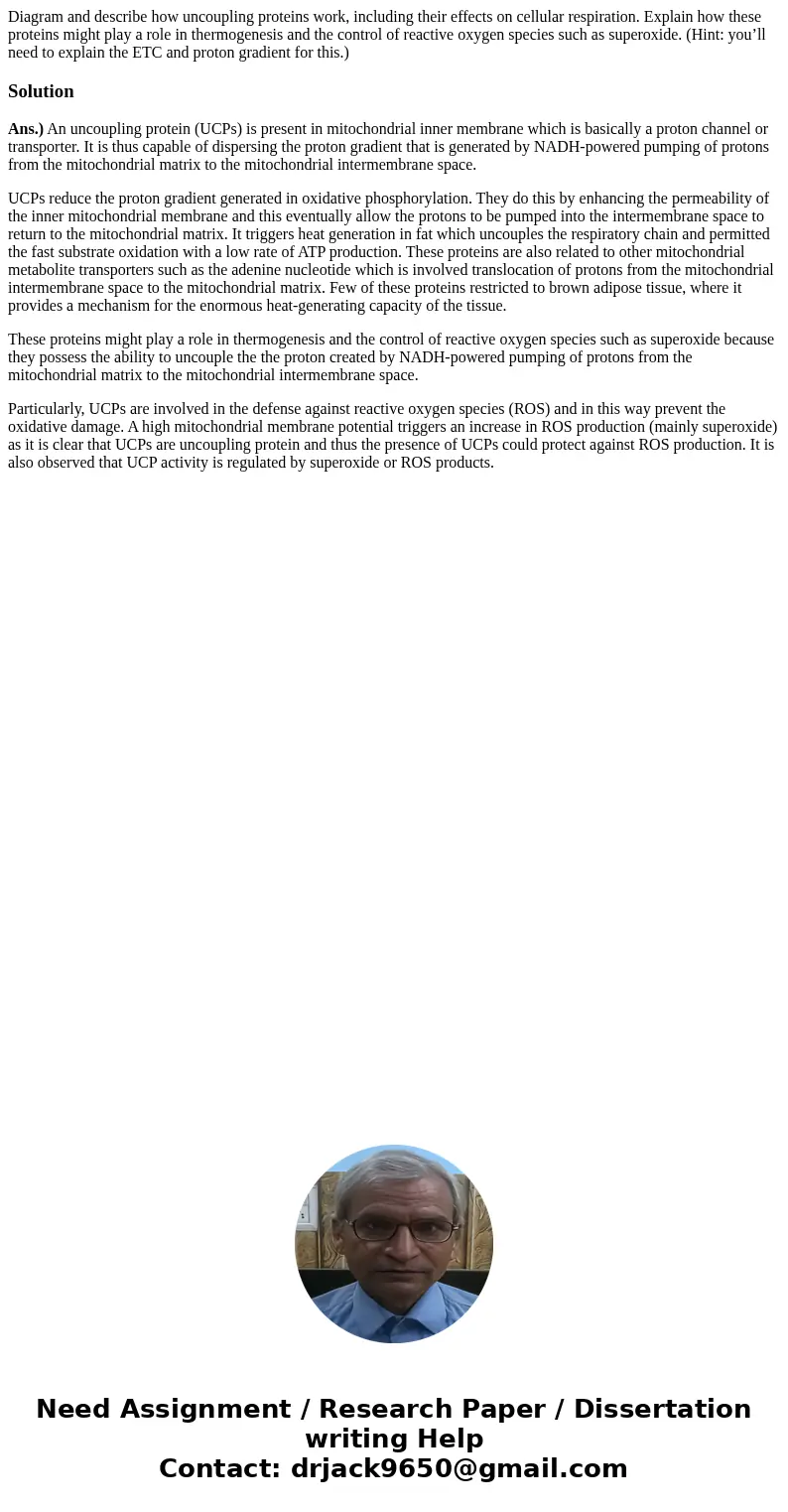Diagram and describe how uncoupling proteins work including
Diagram and describe how uncoupling proteins work, including their effects on cellular respiration. Explain how these proteins might play a role in thermogenesis and the control of reactive oxygen species such as superoxide. (Hint: you’ll need to explain the ETC and proton gradient for this.)
Solution
Ans.) An uncoupling protein (UCPs) is present in mitochondrial inner membrane which is basically a proton channel or transporter. It is thus capable of dispersing the proton gradient that is generated by NADH-powered pumping of protons from the mitochondrial matrix to the mitochondrial intermembrane space.
UCPs reduce the proton gradient generated in oxidative phosphorylation. They do this by enhancing the permeability of the inner mitochondrial membrane and this eventually allow the protons to be pumped into the intermembrane space to return to the mitochondrial matrix. It triggers heat generation in fat which uncouples the respiratory chain and permitted the fast substrate oxidation with a low rate of ATP production. These proteins are also related to other mitochondrial metabolite transporters such as the adenine nucleotide which is involved translocation of protons from the mitochondrial intermembrane space to the mitochondrial matrix. Few of these proteins restricted to brown adipose tissue, where it provides a mechanism for the enormous heat-generating capacity of the tissue.
These proteins might play a role in thermogenesis and the control of reactive oxygen species such as superoxide because they possess the ability to uncouple the the proton created by NADH-powered pumping of protons from the mitochondrial matrix to the mitochondrial intermembrane space.
Particularly, UCPs are involved in the defense against reactive oxygen species (ROS) and in this way prevent the oxidative damage. A high mitochondrial membrane potential triggers an increase in ROS production (mainly superoxide) as it is clear that UCPs are uncoupling protein and thus the presence of UCPs could protect against ROS production. It is also observed that UCP activity is regulated by superoxide or ROS products.

 Homework Sourse
Homework Sourse